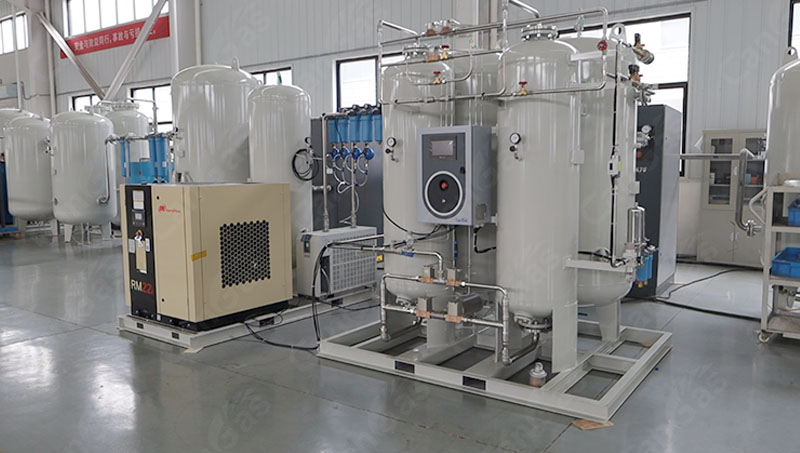How to Customize Adsorption Towers for PSA Nitrogen/Oxygen Generation Systems
ReturnAdsorption towers play an irreplaceable role in PSA (Pressure Swing Adsorption) nitrogen/oxygen generation systems. These towers are not standardized vessels—their size, shape, material, and internal structure are tailored to meet specific gas output, purity requirements, and operational conditions. Below are key factors to consider when customizing an adsorption tower:
1. Height-to-Diameter Ratio
● A balanced height-to-diameter ratio optimizes separation efficiency while minimizing gas flow resistance.
o Excessive height: Increases energy consumption due to restricted gas flow.
o Insufficient height: Compromises separation performance.
● The optimal ratio must align with process requirements and system capabilities.
2. Material Selection
● Materials must exhibit corrosion resistance, mechanical strength, and ease of fabrication. Common choices include stainless steel and carbon steel.
● Considerations:
o Operating environment (e.g., corrosive gases, high temperatures).
o Cost-effectiveness and client-specific needs (e.g., specialized alloys for harsh conditions).
3. Structural Design
● Ensure uniform gas distribution through the adsorbent bed to maximize separation efficiency.
● Design for ease of maintenance:
o Removable adsorbent filling structures.
o Accessible inspection ports for adsorbent replacement.
4. Operating Pressure
● The tower’s pressure range must match the PSA system’s requirements.
● Key factors:
o Confirm maximum/minimum working pressure compatibility.
o Evaluate pressure fluctuation impacts on adsorption efficiency.
o Ensure structural integrity under varying pressures.
5. Temperature Control
● Maintain a stable temperature range to optimize adsorbent performance and longevity.
● Risks of improper temperature:
o High temperatures: Degrade adsorbent stability.
o Low temperatures: Reduce adsorption capacity.
● Implement real-time temperature monitoring and control mechanisms.
6. Dimensional Specifications
● Size the tower based on:
o Processing capacity of the nitrogen/oxygen generator.
o Space constraints at the installation site.
● Prioritize compact designs to reduce footprint and costs, while ensuring compatibility with other system components.
7. Cost-Effectiveness
● Balance price, performance, durability, and maintenance costs.
● Avoid:
o Overemphasizing low cost at the expense of quality.
o Overengineering beyond actual operational needs.
Customizing an adsorption tower requires a holistic approach that integrates technical requirements, environmental conditions, and economic considerations. Proper design ensures efficient gas separation, system reliability, and long-term cost savings.


